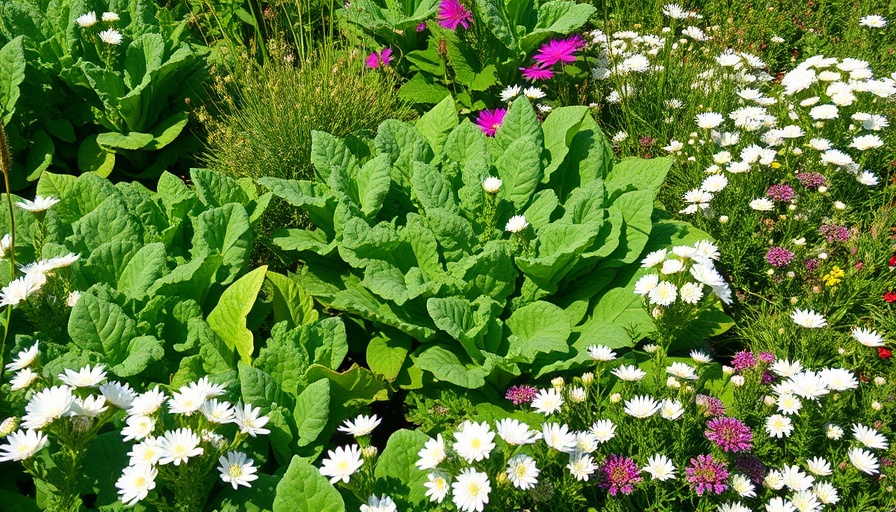
Discovering Sea Kale: The Historical Delight
Sea kale, known scientifically as Crambe maritima, has a rich historical background that stretches back to Victorian England. It was a staple in the diet of the time, prized for both its flavor and its ornamental qualities. Cultivated by Thomas Jefferson at Monticello, this salt-tolerant brassica showcases a delightful blend of culinary and aesthetic appeal. Its return each spring promises a burst of peppery flavor and a unique visual centerpiece in any garden.
The Revival of Sea Kale in Modern Gardens
Although sea kale has seen a shift from existence in traditional vegetable plots to more ornamental uses in modern landscape design, its potential as a vegetable should not be overlooked. Gardeners in the Pacific Northwest have embraced this hardy perennial not merely for its garden design prowess but also for its culinary versatility. The colorful flowers and edible stems provide not only flavors but also a picturesque setting in urban gardens.
Benefits of Cultivating Sea Kale in Your Home Garden
One of the major benefits of growing sea kale is its remarkable resilience. Hardy to USDA growing zone 5, it requires minimal effort once established, making it an ideal choice for busy homeowners looking to increase biodiversity without excessive maintenance. The frilled, upright leaves and contrasting seed pods artfully add texture to landscapes, while the potential for culinary uses—for example, pickled seeds—keeps the garden not just beautiful, but useful.
Sea Kale: A Perfect Choice for Urban Spaces
Urban gardening is gaining popularity, and incorporating sea kale into these environments can enhance both aesthetics and sustainability. Low maintenance and salt-tolerant, it thrives near coastal areas, making it perfect for urban settings where traditional gardens may struggle. These unique conditions can enable a new wave of city landscaping, incorporating vegetables that flourish in less than ideal situations.
Protecting a Culinary Heritage
In the UK, wild sea kale is now a protected plant and can only be harvested with permission, reflecting the value placed on this vegetable not just as food but as an ecological asset. Education around its cultivation and the importance of protecting wild species is crucial for future generations. This lineage creates an interesting conversation around how modern practices can honor historical traditions.
Innovative Recipes with Sea Kale
Integrating sea kale into your meals can be a fresh, unique culinary adventure. Its peppery notes adapt well in salads, as a roasted side, or as a part of creative pestos. As we rediscover this Victorian vegetable, we also inspire new generations to enjoy flavors that once graced the tables of historic kitchens. Pairing sea kale with typical garden vegetables enhances the dish while highlighting its distinct textures and tastes.
Taking Action: Grow Sea Kale Today!
With its rich history and versatility in modern gardens, sea kale is a worthy addition for any homeowner interested in both aesthetics and food. By planting this resilient vegetable, you contribute to a sustainable gardening practice while enjoying the countless benefits it offers. Why not embrace this Victorian classic and bring a piece of history into your contemporary garden space?
 Add Row
Add Row  Add
Add 




Write A Comment